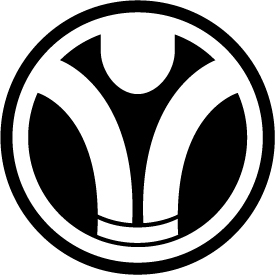BLOG

Weight Training for Jiu-Jitsu in Lake Nona…. Does It Help?
“The last three or four reps is what makes the muscle grow. This area of pain divides the champion from someone else who is not a champion.”
"There is no magic pill" - Arnold Schwarzenegger, seven-time Mr. Olympia
A common question amongst practitioners in Lake Nona Jiu-Jitsu community and beyond, especially those starting out, is, “should I do weight training alongside my Jiu-Jitsu?”
Like with all things Jiu-Jitsu related, considering the individual is vital. Some will walk into a Jiu-Jitsu gym primed and ready to take on a grueling weights session, carrying the ‘right’ frame and responding well to a tight regime. Others will be less inclined, either not seeing themselves as ready for weight training or just not interested.
The question should be, “do the benefits of weight training outweigh the negatives?”
Time
First off, Jiu-Jitsu is highly addictive. Those that start on the path rarely make time for much else even despite all Lake Nona has to offer, lol. When looking to create time for additional, often supplementary, work, the question of whether that time could be better spent doing more Jiu-Jitsu is a fair one. Of all training, whether it’s weights or Jiu-Jitsu, the saying, “you get better at what you train,” will always ring true.
Typically averaging 2-3 times a week, Jiu-Jitsu is a demanding sport, and often energy levels are depleted, meaning expending more in the gym is more often than a big detractor. That said, if the pull to weight training is enough, then short sessions could be the answer.
There’s a common misconception that spending hours in the gym pushing heavy weights is the key to building the pivotal physique. Whilst it’s important you lift appropriate weight and put in the work, short 30–45-minute sessions have been shown to yield great results with a frequency of just 2-3 times a week1. For perspective, Jason Statham is famous for working out on most days only 45 mins… far better to work out intensively for 45 mins than to look at your phone and chat for half the time for a 1 hour training session.
Strength vs. Mobility
We’ve all rolled with that one dude who’s as flexible as a wood plank. He can’t touch his toes, his shoulders barely reach behind his back, and a berimbolo is but a pipe dream. He’s also very muscle-bound. So, does weight training create a lack of mobility? In short, it can, but it’s not guaranteed. Proper stretching and a good foam rolling routine can help keep the stiffness at bay. This, backed up with enough rest between sessions, including Jiu-Jitsu, will also pay off in the long run.
The reasoning behind this stiffness boils down to the ripping and repairing of muscles, often referred to as DOMS (Delayed Onset Muscle Stiffness, or the sore feeling you get the day after training). The tightness you feel is the muscle fibers repairing themselves at the weightlifting has ultimately ripped the muscle, allowing blood to flood into them, and then repaired itself. Overtraining and under-resting (overwhelming common in the fitness world) do allow the muscle to recover fully and therefore create a shortness in the muscle as it contracts to compensate for the lack of recovery2.
Protect the body
Jiu-Jitsu subjects the body to a serious amount of stress on the joints and limbs. Weight training develops stronger muscles surrounding the skeletal frame and provides support. For a sport that is ultimately a fight, focused in large part on joint manipulation, having additional support is a plus.
Control and Explosiveness
Strength has its benefits. Being able to hold and control an opponent is critical in the sport of Jiu-Jitsu, and strength applied accurately adds another dimension to your Jiu-Jitsu. This can then translate into explosiveness. More muscle, again trained in the right way, allows you to change from a static state to one in motion through an explosive fashion that is also controlled. This makes stopping your movements trickier, and when combined with the added control once back in a static hold, it makes for a formidable force on the mats and in real-life situations.
Whilst not technically strength training, cardio does crop up in these conversations. The theory is that Jiu-Jitsu is a sport heavily reliant on cardio, which is true, so could additional cardio work supplement your Jiu-Jitsu around the many great parks in Lake Nona? The juries out on this one. For the most part, training supplementary cardio and only training Jiu-Jitsu yields similar results, so for many, the added benefit of training cardio with Jiu-Jitsu technique seems like the plus. That being said, you don’t always have the option, so it becomes more of a question of whether you should train solo Jiu-Jitsu techniques in a high-cardio fashion? Or would hill sprints or long runs be more beneficial? The more you boil it down, the more the age-old saying rings true, “you get better at what you train.”
The long and short of it?
If you can make time and dedicate yourself to a proper weight training program tailored for Jiu-Jitsu, then, by all means, push on. The benefits of strength, explosiveness and added injury prevention are there…. It will change your game! The question is, of course, in what direction do you want to change it? Strength training has a lot of benefits, but with anything where there’s a surplus, it creates a deficit elsewhere, so be mindful of this.
————————-
1https://www.healthline.com/health/fitness/how-long-should-a-workout-last#bottom-line







